Muhammad Chowdhury
Blind Restoration of Real-World Audio by 1D Operational GANs
Dec 30, 2022Abstract:Objective: Despite numerous studies proposed for audio restoration in the literature, most of them focus on an isolated restoration problem such as denoising or dereverberation, ignoring other artifacts. Moreover, assuming a noisy or reverberant environment with limited number of fixed signal-to-distortion ratio (SDR) levels is a common practice. However, real-world audio is often corrupted by a blend of artifacts such as reverberation, sensor noise, and background audio mixture with varying types, severities, and duration. In this study, we propose a novel approach for blind restoration of real-world audio signals by Operational Generative Adversarial Networks (Op-GANs) with temporal and spectral objective metrics to enhance the quality of restored audio signal regardless of the type and severity of each artifact corrupting it. Methods: 1D Operational-GANs are used with generative neuron model optimized for blind restoration of any corrupted audio signal. Results: The proposed approach has been evaluated extensively over the benchmark TIMIT-RAR (speech) and GTZAN-RAR (non-speech) datasets corrupted with a random blend of artifacts each with a random severity to mimic real-world audio signals. Average SDR improvements of over 7.2 dB and 4.9 dB are achieved, respectively, which are substantial when compared with the baseline methods. Significance: This is a pioneer study in blind audio restoration with the unique capability of direct (time-domain) restoration of real-world audio whilst achieving an unprecedented level of performance for a wide SDR range and artifact types. Conclusion: 1D Op-GANs can achieve robust and computationally effective real-world audio restoration with significantly improved performance. The source codes and the generated real-world audio datasets are shared publicly with the research community in a dedicated GitHub repository1.
Blind ECG Restoration by Operational Cycle-GANs
Jan 29, 2022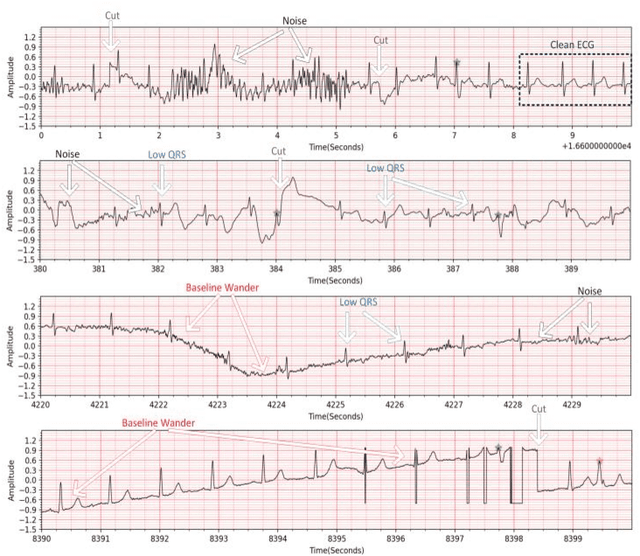
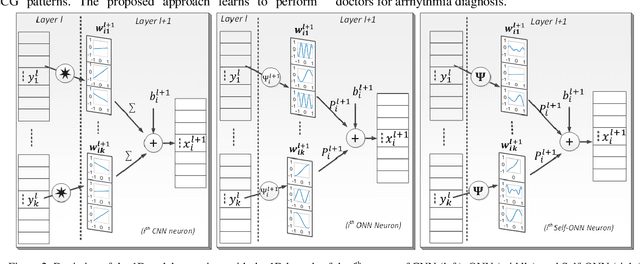

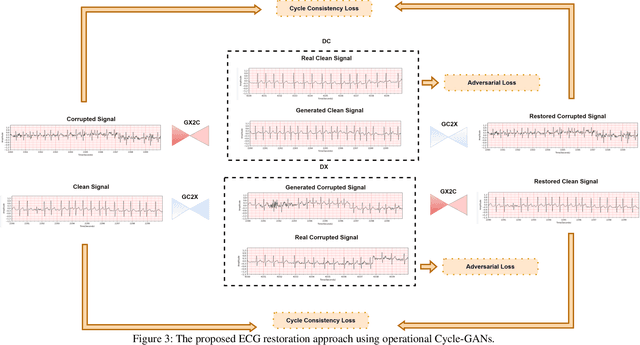
Abstract:Continuous long-term monitoring of electrocardiography (ECG) signals is crucial for the early detection of cardiac abnormalities such as arrhythmia. Non-clinical ECG recordings acquired by Holter and wearable ECG sensors often suffer from severe artifacts such as baseline wander, signal cuts, motion artifacts, variations on QRS amplitude, noise, and other interferences. Usually, a set of such artifacts occur on the same ECG signal with varying severity and duration, and this makes an accurate diagnosis by machines or medical doctors extremely difficult. Despite numerous studies that have attempted ECG denoising, they naturally fail to restore the actual ECG signal corrupted with such artifacts due to their simple and naive noise model. In this study, we propose a novel approach for blind ECG restoration using cycle-consistent generative adversarial networks (Cycle-GANs) where the quality of the signal can be improved to a clinical level ECG regardless of the type and severity of the artifacts corrupting the signal. To further boost the restoration performance, we propose 1D operational Cycle-GANs with the generative neuron model. The proposed approach has been evaluated extensively using one of the largest benchmark ECG datasets from the China Physiological Signal Challenge (CPSC-2020) with more than one million beats. Besides the quantitative and qualitative evaluations, a group of cardiologists performed medical evaluations to validate the quality and usability of the restored ECG, especially for an accurate arrhythmia diagnosis.
Robust Peak Detection for Holter ECGs by Self-Organized Operational Neural Networks
Sep 30, 2021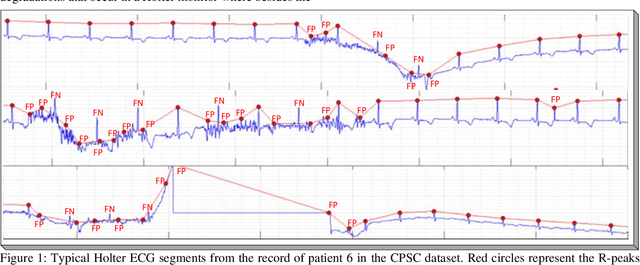
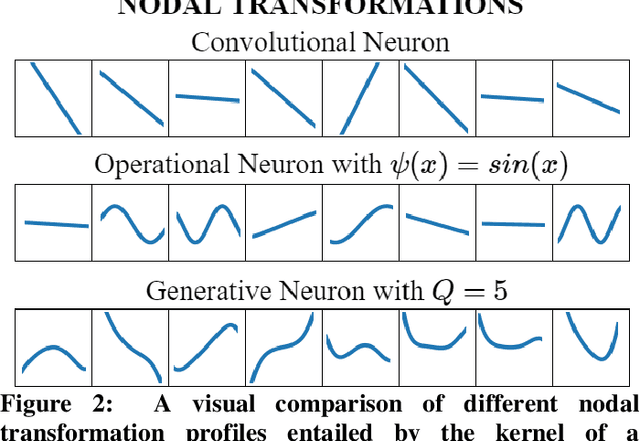
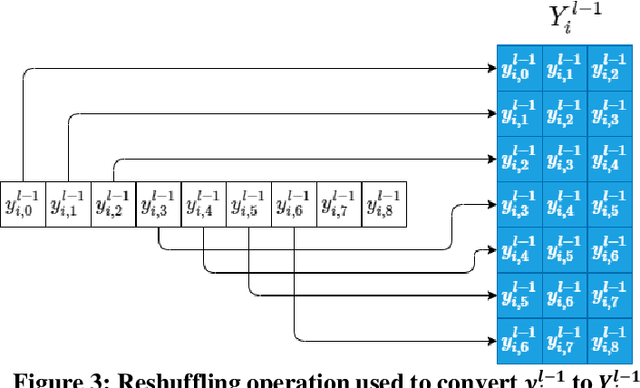
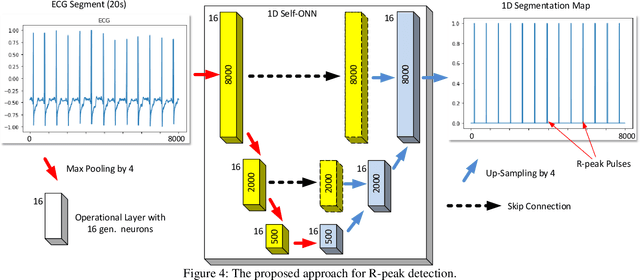
Abstract:Although numerous R-peak detectors have been proposed in the literature, their robustness and performance levels may significantly deteriorate in low quality and noisy signals acquired from mobile ECG sensors such as Holter monitors. Recently, this issue has been addressed by deep 1D Convolutional Neural Networks (CNNs) that have achieved state-of-the-art performance levels in Holter monitors; however, they pose a high complexity level that requires special parallelized hardware setup for real-time processing. On the other hand, their performance deteriorates when a compact network configuration is used instead. This is an expected outcome as recent studies have demonstrated that the learning performance of CNNs is limited due to their strictly homogenous configuration with the sole linear neuron model. This has been addressed by Operational Neural Networks (ONNs) with their heterogenous network configuration encapsulating neurons with various non-linear operators. In this study, to further boost the peak detection performance along with an elegant computational efficiency, we propose 1D Self-Organized Operational Neural Networks (Self-ONNs) with generative neurons. The most crucial advantage of 1D Self-ONNs over the ONNs is their self-organization capability that voids the need to search for the best operator set per neuron since each generative neuron has the ability to create the optimal operator during training. The experimental results over the China Physiological Signal Challenge-2020 (CPSC) dataset with more than one million ECG beats show that the proposed 1D Self-ONNs can significantly surpass the state-of-the-art deep CNN with less computational complexity. Results demonstrate that the proposed solution achieves 99.10% F1-score, 99.79% sensitivity, and 98.42% positive predictivity in the CPSC dataset which is the best R-peak detection performance ever achieved.
 Add to Chrome
Add to Chrome Add to Firefox
Add to Firefox Add to Edge
Add to Edge